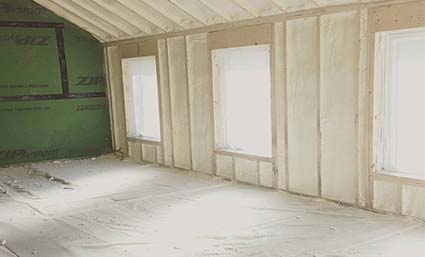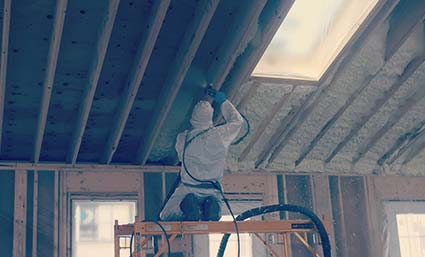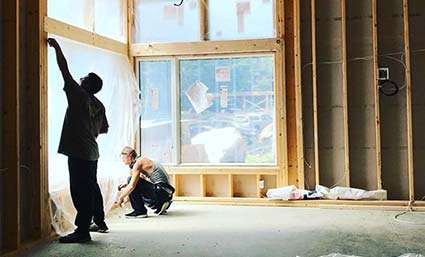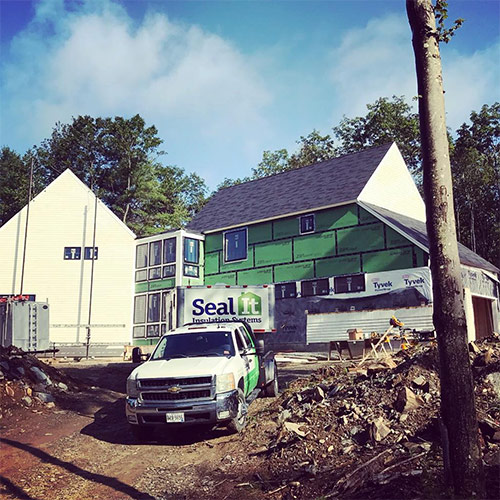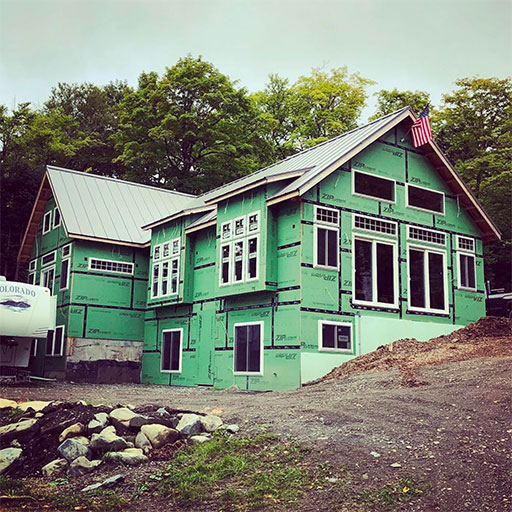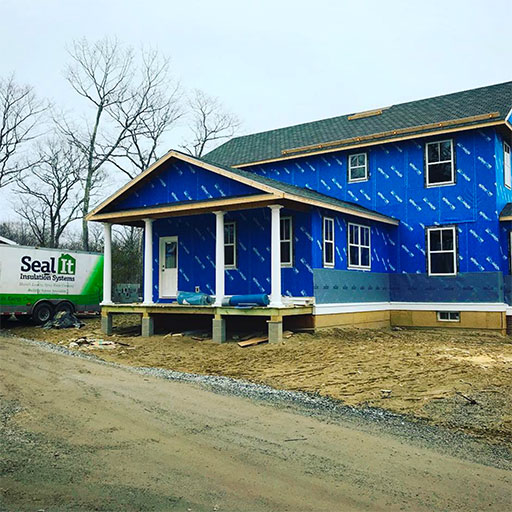If you’re a Maine homeowner, deciding on the best insulation for your home can be confusing.
The two most popular choices are fiberglass batts and spray-in foam insulation and both have benefits and drawbacks. The best option ultimately depends on your needs, budget, and home environment.
This informative post will examine the pros and cons of fiberglass vs. spray-in foam insulation. You’ll be better informed and equipped to decide on your home insulation by the end.
FIBERGLASS INSULATION
Fiberglass insulation is a traditional and popular insulation option for many homes. It comprises thin glass fibers and comes in batt, roll, or loose-fill forms. Its R-value, or thermal resistance, varies between R-2.9 to R-3.8 per inch, depending on the type and thickness of the insulation.
Pros
- Fiberglass insulation is affordable to purchase and install.
- It has a lower upfront cost than spray-in foam insulation.
- It’s readily available and easy to install, even for DIY enthusiasts.
- It’s non-combustible and does not produce harmful fumes.
Cons
- Insulation gaps can occur between the batts or rolls, allowing heat to escape or drafty gaps.
- It may harbor moisture or pests if not accurately installed.
- It can cause skin, respiratory, and eye irritation during installation.
SPRAY-IN FOAM INSULATION
Spray-in foam insulation, also known as polyurethane foam insulation or SPF, is a newer option recently gaining popularity. It comprises a liquid polyurethane or open-cell foam that expands and hardens to form a barrier against air and heat penetration. Its R-value varies from R-3.6 to R-6.5 per inch based on the type of foam used.
Pros
- SPF creates a perfect seal that minimizes energy loss and air infiltration. As a result, it’s ideal for sealing gaps and air leaks in hard-to-reach areas.
- It has a high R-value, so you need less material to insulate your home effectively.
- It can last for the life of the building.
Cons
- SPF is more expensive to install than fiberglass insulation, requiring specialized equipment and training.
- Poor installation may cause off-gassing and lingering smells.
- It’s highly flammable if not fireproofed.
HYBRID INSULATION
While each type of insulation has pros and cons, there’s a way to combine both options to maximize their benefits. Hybrid insulation uses fiberglass batts and spray-in foam insulation to fill the gaps and seams between the studs, joists, and rafters.
Pros
- Hybrid insulation provides an airtight seal while minimizing air leakage.
- Combining high R-value spray foam and low-cost fiberglass insulation lowers the overall cost.
- It provides an effective moisture barrier and improved sound insulation.
Cons
- Hybrid insulation requires professional installation to ensure effectiveness and safety.
- It may be costlier to install than traditional fiberglass batts alone.
When choosing insulation for your Maine home, weighing the pros and cons of fiberglass and spray-in foam insulation is essential. However, the best choice ultimately depends on your home’s structure, budget, and needs.
Fiberglass insulation is a low-cost option that is easily accessible, while the spray-in foam is highly effective at preventing energy loss. A hybrid combination of both may also provide benefits to your home. Whatever option you choose, ensure that a trusted professional perform your insulation installation to ensure safety and effectiveness.
Ready to find out if your home is ready for insulation (and prepare for the hot summer and cold winter ahead)? Get a free quote from Seal It Insulation Systems today!

